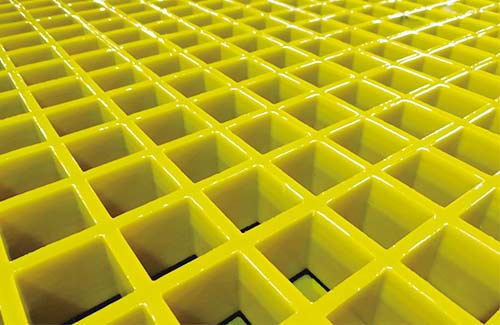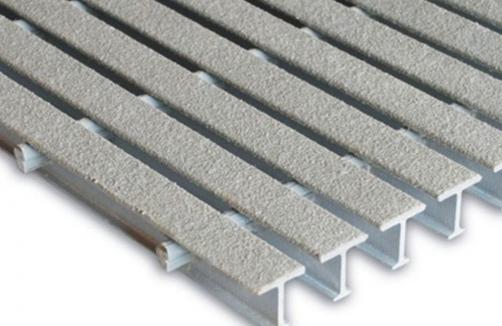1. Introduction
Fiberglass Reinforced Plastic (FRP) grating is widely used in various industries such as chemical, petroleum, power, and wastewater treatment due to its excellent corrosion resistance, high strength-to-weight ratio, and non-conductive properties. However, the safe installation of FRP grating is crucial to ensure the safety of workers and the long-term performance of the structure. This document provides comprehensive safety guidelines for the installation of FRP grating to minimize risks and ensure a successful installation.
2. Pre – installation Safety Preparations
2.1 Personnel Training and Certification
- Training Requirements: All personnel involved in the installation of FRP grating must receive proper training on the characteristics of FRP materials, installation procedures, and safety precautions. Training should include topics such as handling FRP grating to prevent damage, using appropriate tools, and recognizing potential hazards during installation.
- Certification: Workers should be certified in relevant safety courses such as fall protection, scaffolding safety, and working at heights if the installation involves working at elevated levels.
2.2 Safety Equipment and Personal Protective Equipment (PPE)
- General PPE: Installers must wear appropriate PPE at all times during the installation process. This includes safety helmets to protect against falling objects, safety glasses or goggles to prevent eye injuries from debris or splashes, gloves to protect hands from cuts and chemical exposure (if applicable), and steel – toed boots to protect feet from heavy objects and sharp edges.
- Fall Protection: When working at heights above a certain level (typically 1.8 meters or as per local regulations), workers must use fall protection equipment such as safety harnesses, lanyards, and anchor points. The fall protection system should be inspected before each use to ensure it is in good working condition.
- Respiratory Protection: In environments where there may be fumes from resin or other chemicals used in conjunction with FRP grating (such as during cutting or bonding operations), appropriate respiratory protection such as dust masks or respirators should be worn.
2.3 Site Assessment and Preparation
- Site Inspection: Before starting the installation, a thorough site inspection should be carried out to identify potential hazards. This includes checking the structural integrity of the support framework where the FRP grating will be installed, ensuring there are no loose objects or debris on the site, and verifying the presence of any underground or overhead utilities that could pose a risk during installation.
- Weather Conditions: Adverse weather conditions such as strong winds, heavy rain, or extreme temperatures can affect the safety and quality of the installation. Installation work should be postponed during such conditions. If work must proceed in wet or slippery conditions, additional safety measures such as anti – slip mats and increased caution should be implemented.
- Marking and Barricading: The installation area should be clearly marked and barricaded to prevent unauthorized access. Warning signs should be placed around the perimeter of the work area to alert others of the ongoing installation work.
3. Handling and Transport of FRP Grating
3.1 Lifting and Moving
- Proper Lifting Techniques: When lifting FRP grating panels, use appropriate lifting equipment such as forklifts, cranes, or manual handling tools (for smaller panels). Ensure that the lifting equipment is in good condition and has a sufficient load capacity to handle the weight of the grating. Workers should use proper lifting techniques, keeping their back straight and lifting with their legs to avoid back injuries.
- Secure Transport: During transport, FRP grating panels should be properly secured to prevent them from shifting or falling. Use straps or chains to hold the panels in place on the transport vehicle. If transporting multiple panels, stack them neatly and ensure there is adequate padding between them to prevent damage.
3.2 Storage
- Storage Area: Store FRP grating panels in a dry, well – ventilated area away from direct sunlight and sources of heat. Avoid storing them on uneven or unstable surfaces to prevent damage to the panels.
- Stacking Height: Do not stack FRP grating panels too high. Excessive stacking height can cause the lower panels to be damaged due to the weight of the upper panels. Refer to the manufacturer’s recommendations for the maximum stacking height.
4. Installation Process Safety Guidelines
4.1 Support Structure Preparation
- Structural Integrity: Ensure that the support structure (such as steel beams, concrete slabs, or other frameworks) is structurally sound and can support the weight of the FRP grating and any anticipated loads. Inspect the support structure for any signs of damage, corrosion, or instability before installing the grating.
- Surface Preparation: The surface of the support structure should be clean, dry, and free of any debris, grease, or loose materials. This will ensure a proper bond between the FRP grating and the support structure if adhesives are used, or a secure fit if mechanical fasteners are employed.
4.2 Panel Placement and Alignment
- Manual Placement: When placing FRP grating panels manually, work in teams to ensure proper handling and alignment. Avoid overreaching or working in awkward positions that could lead to falls or strains. Use guide marks or templates to assist with the accurate placement of the panels.
- Mechanical Aids: For larger or heavier panels, use mechanical aids such as hoists or trolleys to position the panels. Ensure that the mechanical aids are properly calibrated and operated by trained personnel.
4.3 Fastening and Securing
- Fastener Selection: Use appropriate fasteners such as bolts, nuts, and washers that are compatible with FRP materials. Stainless steel fasteners are often a good choice due to their corrosion resistance. Avoid using fasteners that can cause excessive stress or damage to the FRP grating.
- Tightening Procedures: Follow the manufacturer’s instructions for tightening fasteners. Over – tightening can cause cracking or deformation of the FRP grating, while under – tightening can lead to loose panels and potential safety hazards. Use torque wrenches or other appropriate tools to ensure the fasteners are tightened to the specified torque values.
4.4 Cutting and Modifying FRP Grating
- Cutting Tools: Use tools specifically designed for cutting FRP grating such as circular saws with diamond – tipped blades or abrasive cut – off saws. Ensure that the cutting tools are in good working condition and properly guarded to prevent injuries from flying debris.
- Dust and Fume Control: Cutting FRP grating can generate dust and fumes. Use local exhaust ventilation or portable dust collectors to control the dust. Workers should wear appropriate respiratory protection as mentioned earlier to avoid inhaling the dust.
- Edge Finishing: After cutting, the edges of the FRP grating should be properly finished to remove any sharp burrs or rough edges. This can be done using sanding tools or edge trims to prevent injuries to workers during subsequent handling or use.
5. Safety During Working at Heights
5.1 Scaffolding and Ladders
- Scaffolding Safety: If scaffolding is used to access elevated work areas, it must be properly constructed, inspected, and certified before use. Scaffolding should have guardrails, toe boards, and mid – rails to prevent falls. Workers should climb scaffolding using the proper climbing methods and avoid carrying heavy loads while climbing.
- Ladder Safety: When using ladders, ensure they are placed on a stable and level surface. Ladders should be secured at the top and bottom if possible. Workers should face the ladder while climbing and maintain three – point contact (two hands and one foot or two feet and one hand) at all times.
5.2 Working Platforms
- Temporary Working Platforms: If temporary working platforms are 搭建 during the installation, they should be constructed using safe materials and methods. The platforms should be capable of supporting the weight of the workers, equipment, and FRP grating panels. Guardrails and non – slip surfaces should be provided on the platforms.
6. Electrical Safety
6.1 Non – Conductive Properties
While FRP grating is non – conductive, the installation process may involve working near electrical equipment or power lines. Workers should be aware of the location of electrical hazards and maintain a safe distance from live electrical parts. If working in an area with potential electrical exposure, additional safety measures such as insulating gloves and boots may be required.
6.2 Tool Electrical Safety
When using electrical tools during the installation, ensure they are properly grounded or double – insulated. Inspect electrical cords for any damage and do not use tools with faulty electrical components. Avoid using electrical tools in wet or damp conditions unless they are specifically designed for such environments.
7. Emergency Preparedness
7.1 Emergency Plans
Develop an emergency plan for the installation site that includes procedures for dealing with accidents such as falls, cuts, or chemical exposures. The emergency plan should specify the location of first – aid kits, emergency exits, and the contact information for local medical services.
7.2 First – Aid Training
At least one person on the installation site should be trained in first – aid procedures. First – aid kits should be regularly inspected and stocked with the necessary supplies for treating common injuries that may occur during the installation.
8. Post – installation Safety Checks
8.1 Visual Inspection
After the installation is complete, conduct a visual inspection of the FRP grating to ensure that all panels are properly aligned, fastened, and free of damage. Check for any loose fasteners, cracks, or deformations in the grating.
8.2 Load Testing (if required)
In some cases, especially for critical applications, load testing of the FRP grating may be required to ensure it can withstand the expected loads. Follow the appropriate testing procedures and standards for load testing.
8.3 Site Clean – up
Remove all debris, tools, and equipment from the installation site. Properly dispose of any waste materials such as cut – off pieces of FRP grating and packaging materials in accordance with local environmental regulations.
9. Conclusion
The safe installation of FRP grating is essential to protect the safety of workers and ensure the proper functioning of the installed structure. By following these comprehensive safety guidelines, including pre – installation preparations, safe handling and transport, proper installation procedures, safety during working at heights and with electrical equipment, emergency preparedness, and post – installation checks, the risks associated with FRP grating installation can be significantly minimized. It is important to always refer to the manufacturer’s instructions and local safety regulations in addition to these guidelines to ensure a safe and successful installation.







